The end is nigh – so it’s time to pile into miners and emerging markets
The end of the long-running bull market in equities is near, says Dominic Frisby. Investors should turn to “late-cycle assets” – mining stocks and emerging markets.

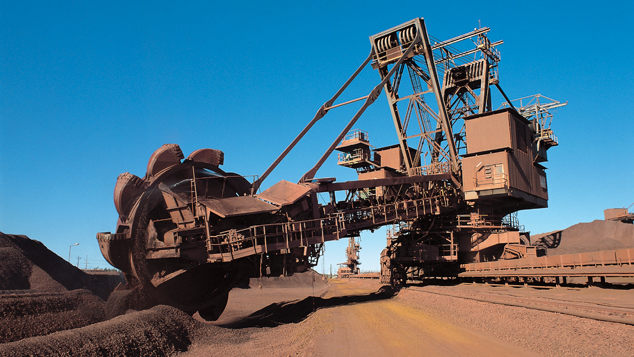
The peak is in sight, but we are not at the peak.That's one interpretation of where we are in this historic bull market in US equities.
If we are late in the cycle, what then should we be doing with our money?
They don't ring a bell at the top or the bottom, but we're getting close
It was the day, after all the turmoil of the global financial crisis, that the S&P 500 made its low. 666 was the number 666 on 06/03/09. There's a nice symmetry to that number. I actually wrote an article two days before saying buy the S&P. I promise you I did!
MoneyWeek
Subscribe to MoneyWeek today and get your first six magazine issues absolutely FREE

Sign up to Money Morning
Don't miss the latest investment and personal finances news, market analysis, plus money-saving tips with our free twice-daily newsletter
Don't miss the latest investment and personal finances news, market analysis, plus money-saving tips with our free twice-daily newsletter
We didn't know it was the low at the time, nor that the date would have significance. There isn't, unfortunately, some butler who comes out and sounds a gong to let you know that the market is at a major turning point. Turning points pass quietly and only make a noise when looked at through the rearview mirror. I just happen to remember the date because of the article.
What began was one of the greatest bull markets in all history. It's a bull market that is still going on now, over eight years later. It's a bull market that has practically destroyed value investing, stock picking, hedge funds any kind of edge or expertise. All that's been required are tracker funds. Be long the index. That's all you've needed to do.
As I write, the S&P 500 stands at 2,477. It is up over 250%. It has almost quadrupled. If my maths sound off there, it's because a double is only a 100% gain, a triple 200% and so on (2,664 would be a quadruple or 300%). The bull market has gone on, by my calculations, for 101 months.
That doesn't actually make it the longest American bull market in history. The longest lasted 113 months, between October 1990 and March 2000. That saw gains of over 400%. It ended with the epic blow-off top that was the dotcom bubble.
Today I'd suggest that we are not yet at the top. The trend is still strong and trends persist. Believers are many. Valuations may be high, but they are not "year 2000" high. There may be signs of deterioration, if you look hard enough. Some sectors have rolled over, but leadership has moved to other areas of the market and the index grinds upwards.
American belief in the immunity of their stockmarket is as embedded as British belief in the housing market. It will take quite something to change that.
But given the length of this bull market, it's not unreasonable, I don't think, to describe where we are as "late in the cycle". And so, perhaps, we should be looking at late-cycle assets.
One manifestation of this is the outperformance by emerging markets of developed world markets.
These assets look very cheap versus the S&P 500
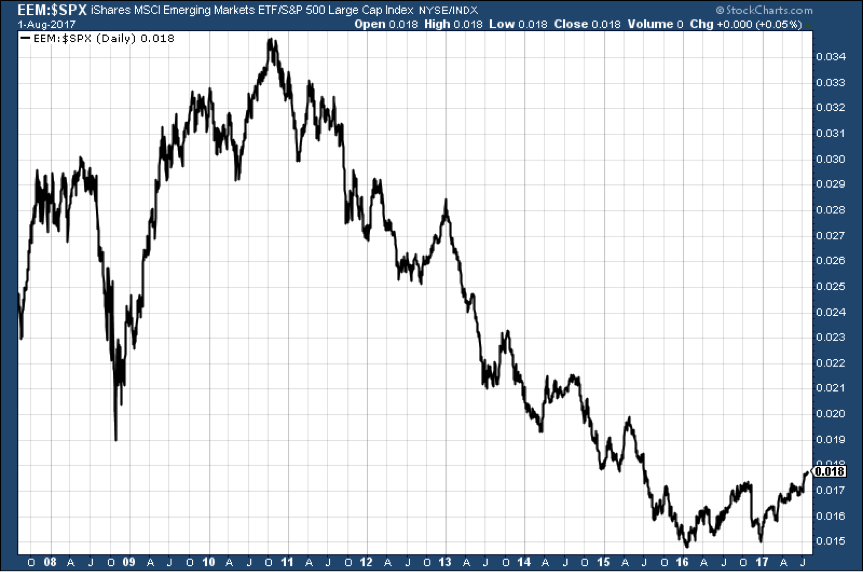
If you look at the period from 2009 to 2011, you can see how much better than the S&P emerging markets did. This coincided with an incredible boom in commodities especially gold and silver but base metals, soft commodities, grains and energy as well. This boom ended in autumn 2011, at the same time as one of many Greek crises.
Since 2011, the S&P has outperformed relentlessly. However, in early 2016 something changed. There was a reversal, one that again coincided with a strong rally in commodities, and emerging markets outperformed.
But it didn't last. All the gains from the first half or three quarters of the year were given back by the end. It looked like yet another bear market rally. Nothing more.
But, actually, no. The ratio re-tested those old lows and then reversed. It looks like a classic double bottom to me. And all through 2017 emerging markets have been outperforming the developed world.
Now the action looks like this. This is the same chart just of the last 12 months. Emerging markets are outperforming.
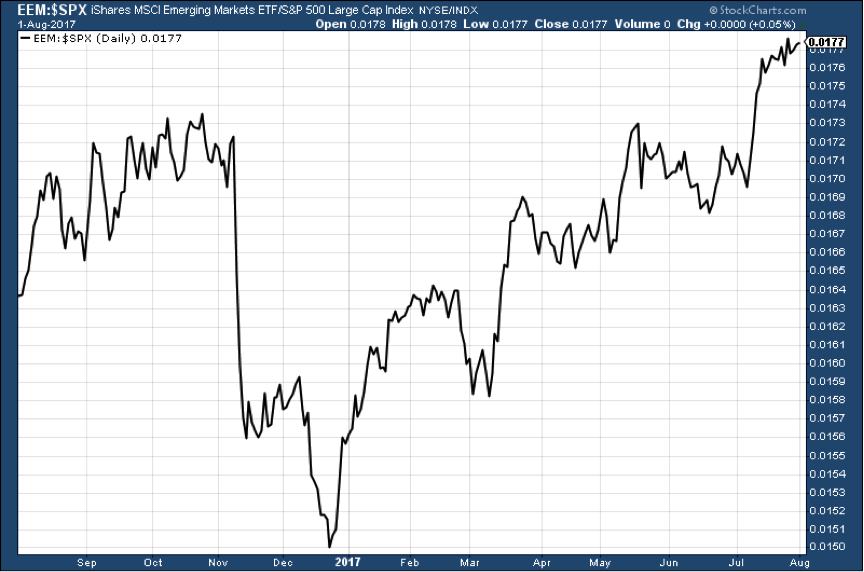
There all sorts of emerging market ETFs to choose from in the UK, if this trade interests you. Vanguard's is listed under the ticker VFEM. The dollar denominated iShares option trades under the ticker IEEM.
If you want to get really cute and play the ratio, the trade is to be long emerging markets and short the S&P.
Another late-cycle asset, which tends to do very well in an inflationary, stock-market-blow-off top scenario should one be on its way is commodities, especially base metals and energy. Gold and silver also tend to do well. (I wrote about gold and silver a couple of weeks ago while I see a summer rally, I'm less convinced about a multi-year bull market being on the cards.)
Copper and zinc, for example, are both showing signs of real strength. Oil too, even with yesterday's sell off.
Below are base metal mining stocks (based on the US-listed exchange-traded fund XME) versus the S&P over the last ten years.
Again we see the multi-year declines, but over the last 12 -18 months signs of a change in trend.
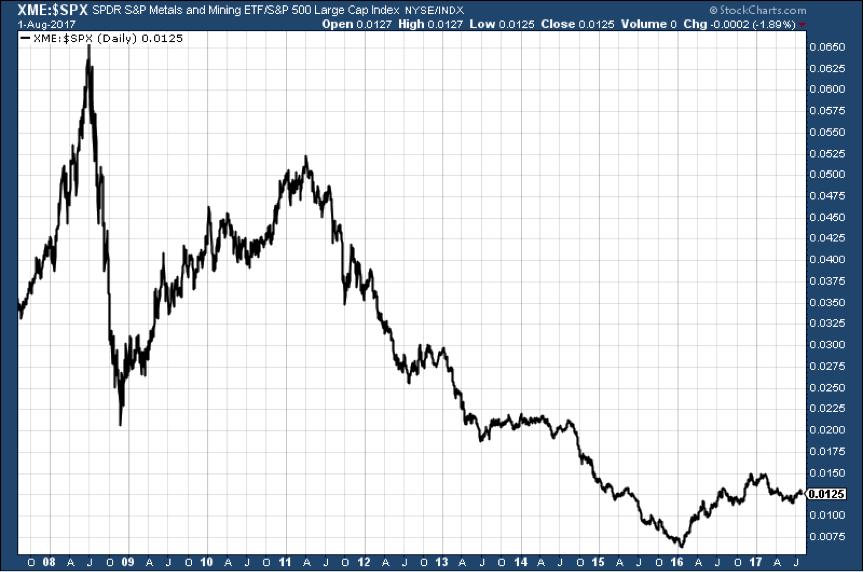
And here is gold versus the S&P over the same period I have to say this chart made me want to eat my words of a fortnight ago.
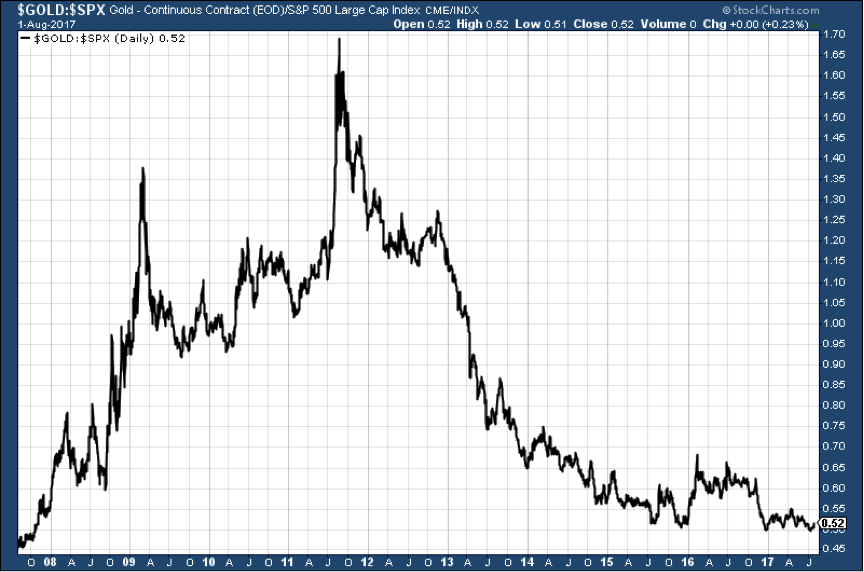
An ounce of gold was worth 1.7 times the S&P in 2011. Now it is worth just over half the S&P. The S&P has outperformed by some magnitude.
Unlike emerging markets and base metal miners, gold has not rallied against the S&P at all in 2017. But my goodness me those declines look like they have run out of steam. A low was made in 2016. It has been re-tested several times in 2017 four by reckoning - and doesn't appear to want to go any lower.
There are two ways of interpreting that action. One is that all the re-tests mean the low is in place. The other is that eventually it will give. I must say I'm inclined to go with the former, especially if the S&P is headed into final blow-off top mode.
But what a symmetrical place for a multi-year low: gold at half the S&P!
But the main takeaway from today's missive is to be looking at and be long late cycle assets: emerging markets and base metals, especially.
Get the latest financial news, insights and expert analysis from our award-winning MoneyWeek team, to help you understand what really matters when it comes to your finances.
Dominic Frisby (“mercurially witty” – the Spectator) is as far as we know the world’s only financial writer and comedian. He is the author of the popular newsletter the Flying Frisby and is MoneyWeek’s main commentator on gold, commodities, currencies and cryptocurrencies. He has also taken several of his shows to the Edinburgh Festival Fringe.
His books are Daylight Robbery - How Tax Changed our Past and Will Shape our Future; Bitcoin: the Future of Money? and Life After the State - Why We Don't Need Government.
Dominic was educated at St Paul's School, Manchester University and the Webber-Douglas Academy Of Dramatic Art.
You can follow him on X @dominicfrisby
-
 Investors will reap long-term rewards from UK equities
Investors will reap long-term rewards from UK equitiesOpinion Nick Train, portfolio manager, Finsbury Growth & Income Trust, highlights three UK equities where he’d put his money
-
 The graphene revolution is progressing slowly but surely
The graphene revolution is progressing slowly but surelyEnthusiasts thought the discovery that graphene, a form of carbon, could be extracted from graphite would change the world. They might've been early, not wrong.
-
 These 2 stocks are set to soar
These 2 stocks are set to soarTips The returns from these two aluminium and tin stocks could be spectacular when the commodity cycle turns says David J Stevenson.
-
 The best ways to buy strategic metals
The best ways to buy strategic metalsTips Weaker prices for strategic metals in the alternative-energy sector are an investment opportunity, says David Stevenson. Here, he picks some of the best ways to buy in.
-
 A lesson for investors from a ill-fated silver mine
A lesson for investors from a ill-fated silver mineAnalysis Mining methods may have changed since the industry’s early days, but the business hasn’t – digging ore from the ground and selling it at a profit. The trouble is, says Dominic Frisby, the scams haven't changed either.
-
 The natural resources industry is in a tight spot – which is bad news for the rest of us
The natural resources industry is in a tight spot – which is bad news for the rest of usOpinion The natural resources industry is in a bind. We need it to produce more energy and metals, but it has been starved of investment, plagued by supply chain issues, and hobbled by red tape. That’s bad news for everyone, says Dominic Frisby.
-
 How to invest in the copper boom
How to invest in the copper boomTips The price of copper has slipped recently. But that’s temporary – the long-term outlook is very bullish, says Dominic Frisby. Here, he explains the best ways to invest in copper.
-
 Why investors should consider adding Glencore to their portfolios
Why investors should consider adding Glencore to their portfoliosTips Commodities giant Glencore is well placed to capitalise on rising commodity prices and supply chain disruption, says Rupert Hargreaves. Here’s why you should consider buying Glencore shares.
-
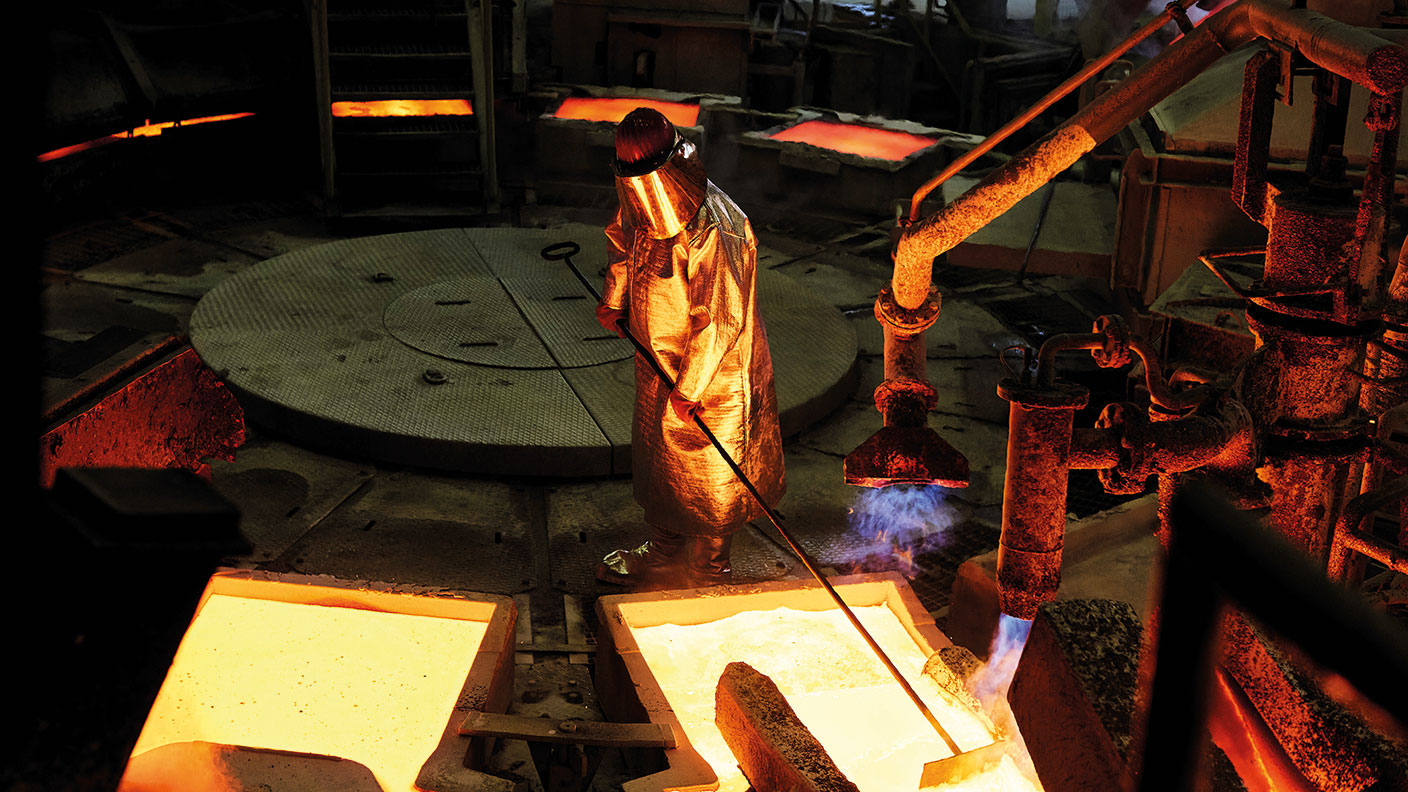 How to invest in the multi-decade boom in industrial metals
How to invest in the multi-decade boom in industrial metalsTips The price of key industrial metals has already begun to rise. The renewable energy transition will take them higher, says David Stevenson. Here's how to profit.
-
 Avoid China’s stockmarket – here’s what to invest in instead
Avoid China’s stockmarket – here’s what to invest in insteadOpinion China’s stockmarket is not a good place for investors to be. But you can't just ignore the world's second-largest economy, says Dominic Frisby. Here, he picks an alternative China play.
